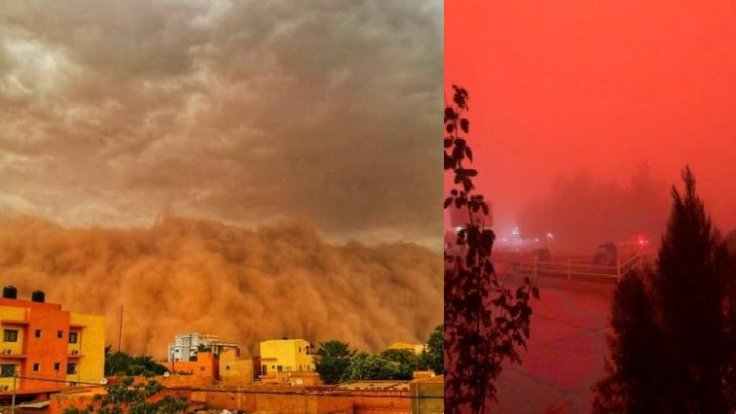A video of the sky turning blood red as sandstorm gushes West Africa is going viral. The sandstorm engulfed buildings at Niamey in Niger. The scary video showed dust that looked red in colour rising hundreds of meters above buildings.
The sandstorm hit West Africa on Monday, but the videos are being shared widely on social media now. The strong sandstorm hit Niger at 2 pm on Monday, where the entire city came to a standstill and those on road held their breath as they saw the storm engulf buildings. Sandstorm is not an unusual scenario in Niger and is seen often between January and April which is called as the 'Harmattan' season. These sand storms can travel hundreds of kilometres once lifted into the air.
Sandstorm hits West Africa

One video showed a huge wall of sand engulfing buildings in Niamey. The video widely shared on Twitter has been watched by at least 200,000 people. "I had been told about it but I had never seen it before. Ink night in broad daylight. Extreme sandstorm at #Niamey. Pray that the rain will fall. It is 2:14 p.m. Fortunately, I have just returned," wrote one Twitter user.
"Under the #storm in #Niamey. Mind-blowing! In 5 minutes the city has plunged into darkness. Subhan'Allah" wrote another user.
What is a sandstorm?
A sandstorm that is also called dust storm is a strong, turbulent wind which carries clouds of fine dust, soil, and sand over a large area. It is a meteorological phenomenon that is experienced often in arid and semi-arid regions.
Dust storms are formed when a strong wind blows loose sand and dirt from the surface that is mostly dry. The storm rises when particles of sand are transported by saltation and suspension, which is process shifting soil from one place and depositing it somewhere far away.
Dust storms are mainly seen in North Africa and the Arabian peninsula, which houses a number of deserts. There is an argument that poor management of the drylands, deserts including change in the climate have caused an increase in dust storm's size and frequency.









